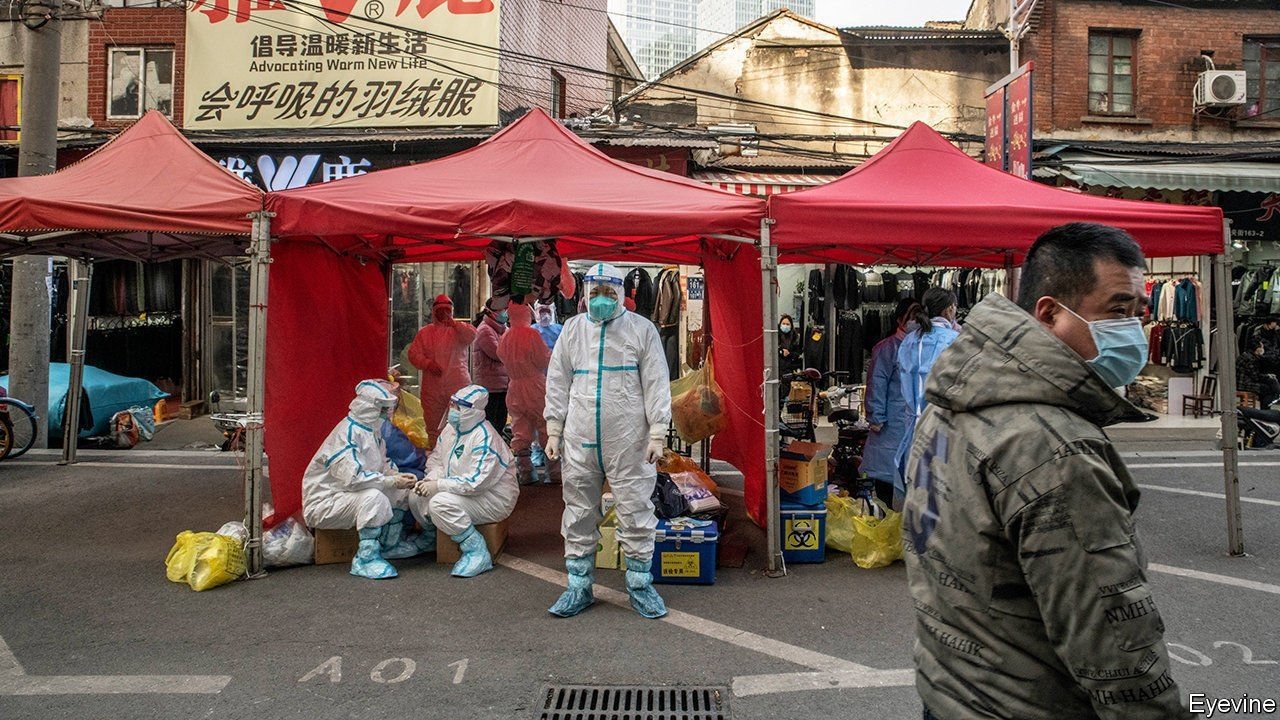Where did covid-19 come from?

Bats, mink, pangolins and other animals are suspects, according to a report by the World Health Organisation. But many questions remain unanswered
IN LITTLE MORE than a year, covid-19 has spread to 192 countries, caused more than 128m recorded infections and over 2.8m recorded deaths. But it is still not clear where the disease came from. The question has caused diplomatic quarrels, notably between Donald Trump’s administration and China, and excited conspiracy theorists who say the pathogen leaked from government-run Chinese labs. On March 30th a team of experts convened by the World Health Organisation (WHO) published its report into the likely origins of SARS-CoV-2, the virus that causes covid-19. After a 28-day mission to Wuhan, the Chinese city where the virus was first spotted in late 2019, the team claimed to have found important clues. But the report has been criticised by at least 14 countries, including America and Britain, which accuse China of withholding access and information. Tedros Adhanom Ghebreyesus, the director-general of the WHO, described the investigation as not “extensive enough”. What are the probable origins of covid-19 and when, if ever, might its source be established?
The assumption is that SARS-CoV-2 spread from animals to humans, possibly through the Huanan seafood and wildlife market in Wuhan. But which animal? At the start of the pandemic, bats were identified as a likely source of the virus. They harbour a range of SARS-like viruses, and in theory could have transmitted covid-19 directly to humans. But the viruses so far identified in bats have different characteristics from SARS-CoV-2. One important difference is in the spike protein, which helps the virus gain entry to, and infect, human cells. Compared with viruses found in bats, the protein of SARS-CoV-2 sticks better to a receptor protein, ACE2, found on the surface of many human cells, meaning that it has a higher chance of entering them.
Another possible pathway is through the trade in frozen animal or seafood products, on which it can live. The idea is that it could have originated in a farm inside China—or, indeed, outside it—and ended up at the market in Wuhan. China itself has promoted this theory, possibly to help deflect questions over its early handling of the outbreak. However, there is no evidence that transmission was foodborne. The WHO’s report described the chances of this as “very low” (although cold-chain products present in the market at the start of the pandemic were not tested). The report also called theories that covid-19 was leaked from one of three laboratories near Wuhan “extremely unlikely”, although it did not completely rule that out, either.
The most probable scenario, believes the WHO, is that the virus crossed from bats to humans via a third animal although, despite a lot of hard work, this species has not yet been identified. SARS-CoV-2 has been shown to adapt rapidly in feline and mustelid species such as cats and mink; pangolins, raccoon dogs, rabbits, civets and ferret badgers are also thought possible. But the evidence does not show whether any of these were the reservoir for the virus.
It would not be the first time a coronavirus has spread from animals to humans. In 2002 an outbreak of severe acute respiratory syndrome (SARS-CoV) appeared in the Chinese province of Guangdong before quickly spreading to other Asian countries and beyond. It probably passed to people from bats via civets, small mammals sold in China for their meat. Some 774 people were recorded as dying after becoming infected and by July 2003 the outbreak had been contained. A decade later, a deadlier illness, Middle Eastern respiratory syndrome (MERS), surfaced in Saudi Arabia. MERS, which is still in circulation, has killed more than 850 people and has been found to spread from camels to humans. And there are four common types of human coronaviruses, the first of which was identified in the 1960s. They are endemic, usually cause mild cold symptoms and may have come from bats.
Although China recorded the first cases of the new coronavirus in Wuhan in December 2019, it could have circulated unreported before then. Transmission could also have occurred outside the city at the same time, or earlier. The WHO’s report is circumspect, finding that “no firm conclusion… about the role of the Huanan market in the origin of the outbreak, or how the infection was introduced into the market, can currently be drawn”.
The mission to Wuhan was only the first phase of the investigation. The next steps could include testing on wildlife and farm animals in other parts of Asia, and further studies in countries that reported covid-19 cases before the end of December 2019.
The countries critical of the WHO’s report have called for an independent probe. Yet collaboration with China remains important to understanding how the virus spread, and this is proving tricky. China’s relations with the West are hardening, and its handling of the pandemic is one of many sources of tension, along with China’s punishment of Uyghur Muslims and its trampling of democratic freedoms in Hong Kong. Viruses care little for such geopolitical sensitivities. Tracing the origins of covid-19 is more than an academic exercise. It could give the world a better chance of preventing a future pandemic.
Dig deeper
All our stories relating to the pandemic and the vaccines can be found on our coronavirus hub. You can also listen to The Jab, our new podcast on the race between injections and infections, and find trackers showing the global roll-out of vaccines, excess deaths by country and the virus’s spread across Europe and America.


